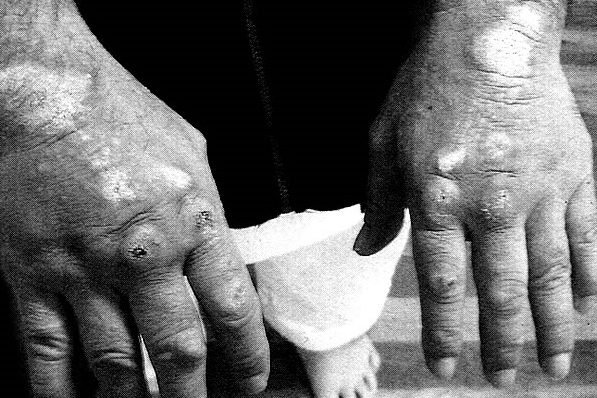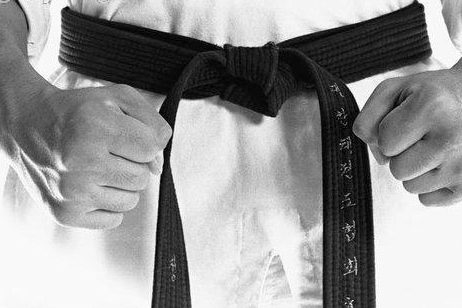The life of a typical Okinawan boy (or girl) basically circles around two things:
School…
and Sports
When they don’t sleep or eat, they always do one of those two. Either they’re studying in school (or doing homework at home) or they are doing physical exercise (sports) with their schoolmates. Quite a busy, yet somewhat simple life.
Now, if the kids of Okinawa (and Japan in general) are so busy, with school and activities, how can they have the highest life expectancy in the world (81.2 years old in average)? Shouldn’t they be burned out and ready for the coffin at 20?
What is their secret?
Well, according to researchers, it’s quite simple – it’s the food. Their healthy island cuisine (fish, seaweed, tofu etc.) is what makes them so incredibly healthy… or is it?
I think that is only one part of the secret. Because, believe it or not, in reality the Okinawans love fried food. I’m not lying! Fried chicken, fish, pig, egg, potato, horse, and the list goes on. It’s everywhere!
If it is eatable, it’s fryable!
Now how does this go together with their “long and healthy life”? We have all been taught that fried food is “bad”, and should generally be avoided, right?!
So, is this a paradox? The worlds most healhy people love fried food? Well… perhaps the food is not the true secret for their long life.
Maybe it has something to do with their daily routines…
Like exercising!
Now, we all know that exercise is good, that’s no news. But the exercise I’m talking about is special – it places a huge importance on the group as a whole, instead of individuals. And this is true for the whole Okinawan society, not just sports. Group, group… group.
The group always comes first.
It’s almost like it’s embedded in their DNA.
The Okinawans truly are masters at making groups, maintaining them, and expanding them. I don’t know if there is a fancy Japanese word for this, but there is a Western term for it:
Group cohesiveness – “the force that brings group members closer together”
If you are a member of a Karate club, or run a Karate club, you should absolutely learn about this! I believe this is the key to the Okinawans long and happy life. Social circles and group cohesiveness.
Not the fried chicken.
So what makes a group hold together? And how can we use that for our Karate clubs and schools?
Well, according to a bunch of experts I read about in a book (“Social psychology” By Kenneth S. Bordens, Irwin A. Horowitz), there are a few important points.
Check them out:
1. Group members’ mutual attraction.
Groups are generally cohesive when the group members find each other attractive or friendly. Whatever causes people to like one another more increases group cohesiveness.
Recommendation #1: Make people like each other. It’s as simple as that.
2. Members’ propinquity (physical closeness, as when they live or work near each other)
Sometimes being around people regularly is enough to make people feel that they belong to a group. The various departments of an insurance company – marketing, research, sales, and so on – may think of themselves as groups
Recommendation #2: Make people physically close to each other. Consider belt rankings, two-person exercises and so on. Wearing the same clothes (club’s t-shirt, patch, jacket etc.) is also something to take into consideration, as it makes people more physically close to each other.
3. Members’ adherence to group norms.
When members live up to group norms, without resistance, the group is more cohesive than when one or two members deviate a lot, or when many members deviate a little.
Recommendation #3: Make sure everybody knows and follows the rules. The fewer rules you have, the easier it is to follow them. If people deviate (break the rules), take immediate action.
4. The group’s success at moving toward its goals
Groups that succeed at reaching their goals are obviously more satisfying for their members and, therefore, more cohesive than those that fail. If groups do not achieve what members wish for the group, they cease to exist or at the very least are reorganized.
Recommendation #4: Make sure the group has goals that everybody are aware of, and that they are reached. A satisfied group is a strong group. A few reachable goals are better than many goals (less risk of failing). When a goal is reached, make sure the group hears it! Consider gradings, tournaments etc.
5. Difficulty level of entering the group
A difficult entry criteria or procedure (initiation) to a group tends to present the group in more exclusive light. The more “elite” the group is perceived to be, the more prestigious it is to be a member in that group and consequently, the more motivated members are to belong and stay in it.
Recommendation #5: Make it look exclusive, or good, to be a member of the group. Make it appear hard to get in. Consider gradings: A person who had a hard time earning his/her black belt is more likely to stay in the group (of black belts) than a person who had an easy grading. Also consider advanced classes, and the requirements for belonging to the advanced class.
____
Follow these points and you are destined to greatness in making, developing and maintaining groups.
Better group = more students + happier students = better economy = better club.
And perhaps a longer life.
(But eat your vegetables anyway to be on the safe side.)



4 Comments